The game with sand is the oldest occupation of man. After all, even in order to draw drawings on the rocks, improvised means and skills were needed. And sand - it is everywhere. He picked him up, and he is already flowing, getting out, creating figures. The properties of the sand to lead negative emotions into the ground and to free the psyche from internal conflicts were seen by psychotherapists. The famous psychotherapist K. Jung developed the basics of sand therapy. Currently, there is even such a direction of sand psychotherapy - Jungian. Sanding therapy methods are successfully used for children and adults. Psychotherapists, followers of this method, organize special groups for those who want to bring harmony into their lives, solve internal experiences, improve their lives and become happier.
Content
Sanding therapy for children
Sanding therapy is even more popular for solving psychological problems in children. If adults can determine and voice their psychological state, then in children, only parents can observe internal problems. Children cannot complain about situations that create internal discomfort. The child needs the help of a psychotherapist if:
- he has fears and often arising anxiety;
- nervous tics and neuroses occur;
- inadequate behavior;
- low self -esteem;
- complex relationships with parents, classmates, teachers or educators;
- there is a depressive state and suicidal thoughts;
- transferred psychological trauma or violence.
Sand has the ability to flow and lead negative experiences and fears into the ground. Therefore, the result of the sand games is release from everything that bothers and excites. And, most importantly, this release occurs at a subconscious level, without the use of psychological effects and medications. Sanding therapy with the help of a children's psychotherapist or teacher, who unobtrusively pushes the child to release from internal problems, develop the child’s self -esteem and helps him assert himself in society. Children's sand therapy does not set the goal of remaking the child, but allows you to learn to be yourself through the game.
Sand for sand therapy
In sand therapy, quartz sand with fractions of 0.1-0.3 is used, it has a color from a pale white to a bright yellow or reddish tint. Sand for therapy is soft and pleasant to the touch, easily flowing. You can use sand with larger particles: washed river or sea. If you have prepared river or sea sand, it must be sifted, rinsed and thoroughly dried. For the first lessons and acquaintance with the material, it is recommended to choose the smallest white sand.
Both dry and humid sand can be used. Therefore, for irrigation of sand, a spray gun is used. Sand can be bought in pet stores or specialized stores, where materials for creativity are sold. The sandbox should be filled with 2/3 of the sand, so 5-6 kilograms will be required.
Sand therapy table
The sandbox can be purchased in stores or salons, where materials for creativity are sold. It is a wooden box made of coniferous wood. Its dimensions: length 70 cm, width 50 cm, depth 8-10 cm. You can buy a plastic sandbox, but do not forget about the positive effect of the tree, about warmth and rest that the wooden products are blown.
If it is impossible to buy a sandbox, do not be upset! Such a simple box can be made by yourself or asking friends who have the skills of working with wood. Materials can be bought in construction stores. The inside of the sandbox for sand therapy is painted in blue or blue. This is a prerequisite, such colors help more easily model. The blue sides of the sandbox are symbolized with the sky, and by moving the sand at the bottom, you can easily make a blue lake or river. So that the sand does not get out of the corners and joints, everything is carefully processed and putty.
Currently, the method of sand therapy is very popular and diverse. There is a direction of drawing of sand paintings on a transparent screen with backlight (sand animation). 1 kg of sand is poured on a table or sandbox for sand painting with special lighting and drawn. Such a table can also be purchased, but if there is no such possibility, you can arrange a sand therapy just on a piece of Watman. To do this, you can simply bend and fix the edges of the batman, and pour a kilogram of sand on paper.
Figures for sand therapy
Figures of people, animals, birds, and fairy -tale characters are used for sand therapy. Figures should be from different materials: wood, clay, plastic and metal. The collection of figures should be represented by large and small objects, colorful and colorless, beautiful and ugly. You can not use tiny figures for classes with young children. In stores you can buy both separate figures and whole thematic sets. It is good to use natural natural materials, such as shells, twigs, pebbles. The entire collection of figures for sand therapy during class should be stored in free access for children. There are different ways to store miniatures: they can be set on shelves in groups or by topics, and can be staged mixed.
Sanding therapy exercises
The very first exercise - acquaintance with sand is called "Hello sand!"
- Children put their hands on dry sand, draw on it with their hands, then the back of the palms. They tell at the request of an adult about what sand (soft, dry).
- The "snakes" in the sand are performed. Children drive smoothly with their fingers, drawing wavy lines.
- Children take the sand into the fists, tighten it tightly, and then slowly pour the sand into the sandbox.
- Children bury their hands in the sand, and then find their hands.
- With the help of an adult, each finger "greets" with sand. The child puts his palm with spread fingers in the sandbox. Mom or teacher pushes sand in turn on his fingers. A child with eyes closed tries to determine which finger the sand is poured onto.
These simple exercises allow the child to feel the sand tactilely, evaluate his properties. Sanding therapy for children can be carried out for a small group of children of the same age and for children together with parents.
Exercise "Prints of our hands"
This exercise teaches to evaluate the sensations. It is better to conduct a lesson with parents. The child and the adult alternately make fingerprints on the sand. The palm is pressed and slightly immersed in the sand. The adult is first telling his sensations. He talks about which sand is soft or rough, what small grains of sand he feels with skin. Then the child tells about the sand.
Exercise "Rain of sand"
This exercise relieves muscle tension and aggression.
The presenter announces that today the rain of sand began in the sandbox. The child is given the opportunity to feel the sand flowing from a fist to his palm, to the sandbox, and on the palm of his mother. Then mom makes it raining to the child's hand.
Exercise "Traces in the sand"
The exercise is carried out in the form of a game. The presenter suggests showing how different animals go on the sand. First, bears go: the child makes fists in the sand with fists.
Then the bunnies jump: the fingertips easily knock on the surface of the sand.
And now snakes crawl: the child’s fingers make a wavy pattern on the surface of the sand.
Bugs are fleeing: fingers are spread, the child imitates the legs of insects. You can immerse your fingers in the sand.
Games of sand therapy
Games with a limited number of objects. It is recommended to choose a child:
- 4 figures of people;
- 4 buildings: house, gazebo, bridge, tower;
- 4 figures of animals;
- and 4 more objects to choose from.
Hide and seek
With the help of this game, the leader or teacher can find out what worries the child and what he would like to get rid of. The child is invited to bury one or more objects of the selected 12 in the sand. The psychologist does not look at the process of hide and seek. After that, the child searches one after another hidden objects and talks about each.
Thematic world
The child is invited to build the world on one of the topics chosen: “My family”, “My friends”, “My future” and so on.
In order to eliminate psycho-emotional problems in the child, there are not enough 1-2 classes. Most often, classes are conducted according to programs, including at least 6-10 classes.
The program of sand therapy is built in such a way that in the first and second lesson the psychologist determines what psychological problems the child exist in. Next are classes aimed at the development, formation and adjustment of the emotional state. In the final lesson, the psychologist explores how much the child’s consciousness has changed. Each program of sand therapy classes necessarily includes a free game in the sandbox, in which the child reveals fantasy and creative abilities. After all, it is not for nothing that K. Yung, the author of sand therapy, claimed that "fantasy is the mother of all opportunities."
The relevance of sand therapy
Sanding therapy is used not only for children who have psychological and emotional problems. This technique helps children of different ages overcome age crises, complex relationships with friends and parents. It is noted in practice that children after several classes of sand therapy become less aggressive, easier to contact and show their feelings more freely.
Sanding therapy is successfully used in the practice of speech therapists. Classes and sand games improve the fine motor skills of the fingers and help children overcome speech therapy problems. Sanding therapy helps children get to know themselves better and open their creative potential.
Increasingly, parents acquire a sandbox simply so that the child develops fully, and not to overcome psychological problems. Parents, along with the child, can build magical cities, tell fairy tales, draw. Joint communication and creativity creates an atmosphere of love and understanding in the family.
Sanding therapy. Video
The video tells about sand therapy for children.


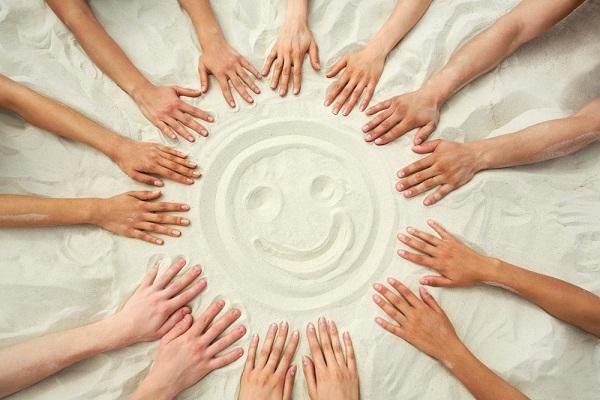
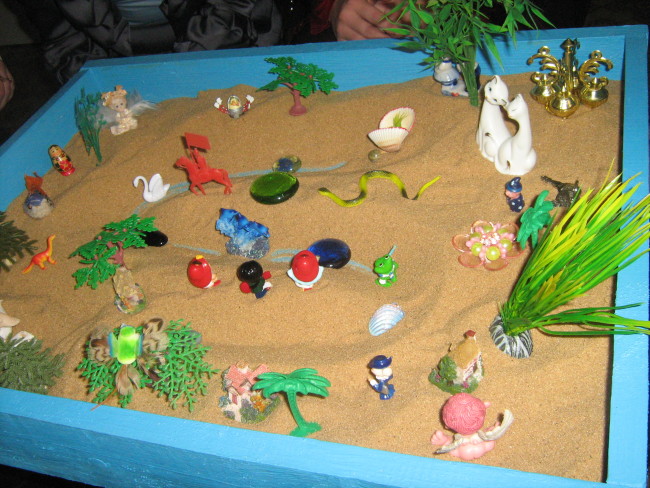
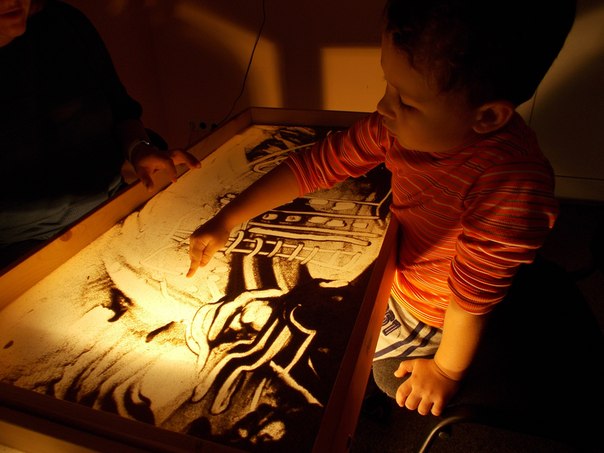
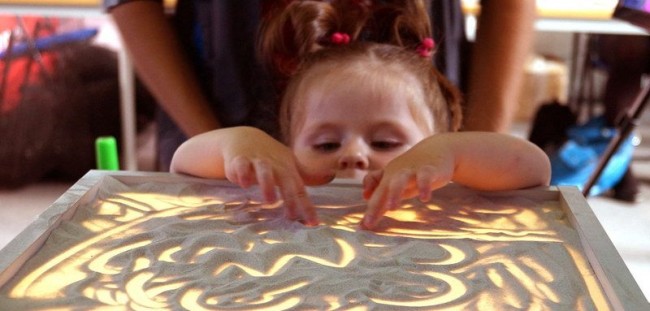

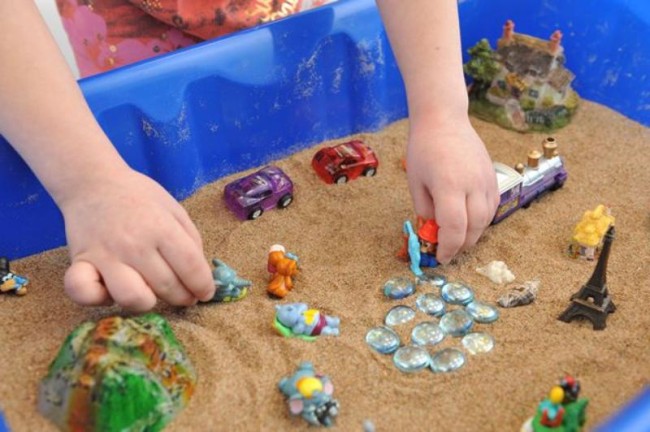







Comments
a couple of years ago, there was no side of metrogils from the same problem, there were no side effects ...
I’m not a fan of peeling at all, it saves from acne of metrogil, it also smoothes it ...
Great article! ...
I take the second course of the Capsules Climafite 911. The tides went very quickly. It became calmer, irritability went away and I sleep well ...
i also noticed - it is worth nervous, everything immediately affects the face. Therefore, I try to avoid conflicts and unpleasant people. Of the creams, I like Miaflow from wrinkles - smoothes not only small wrinkles ...